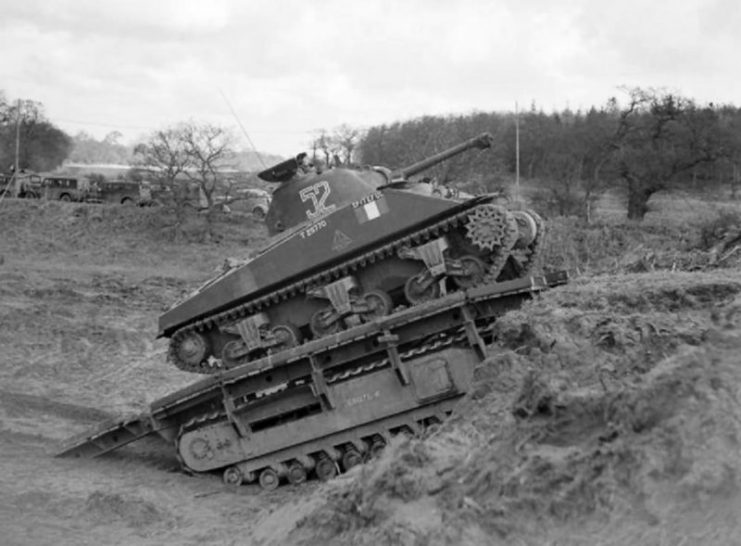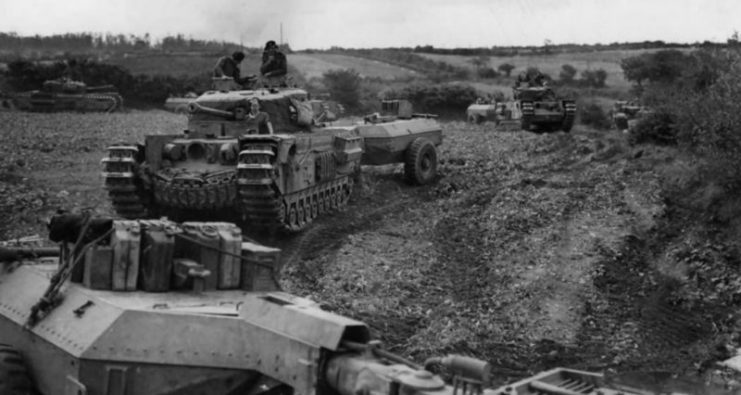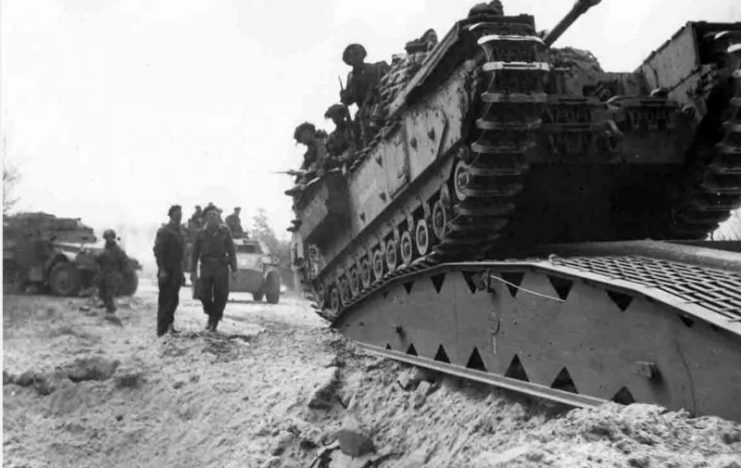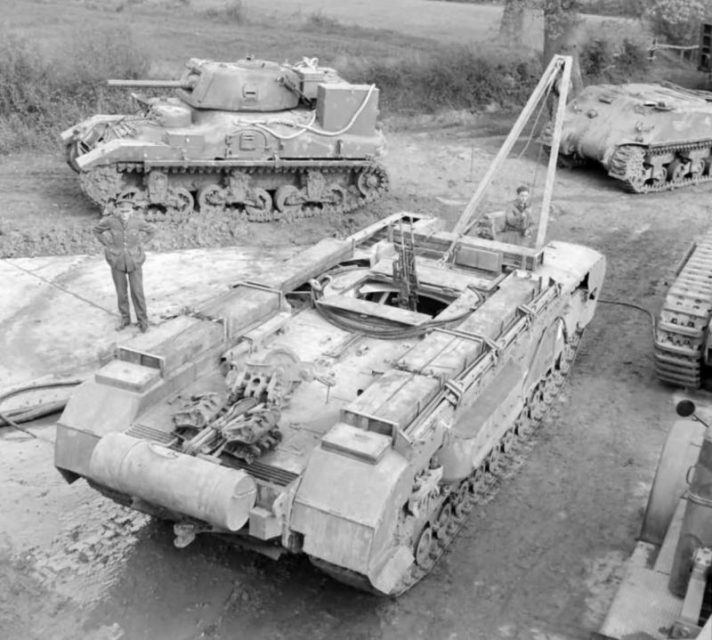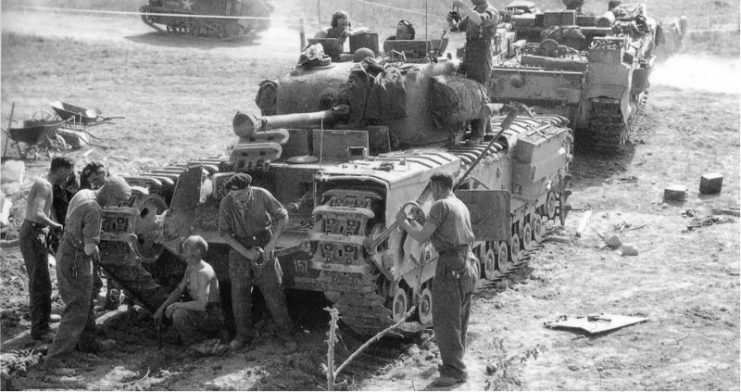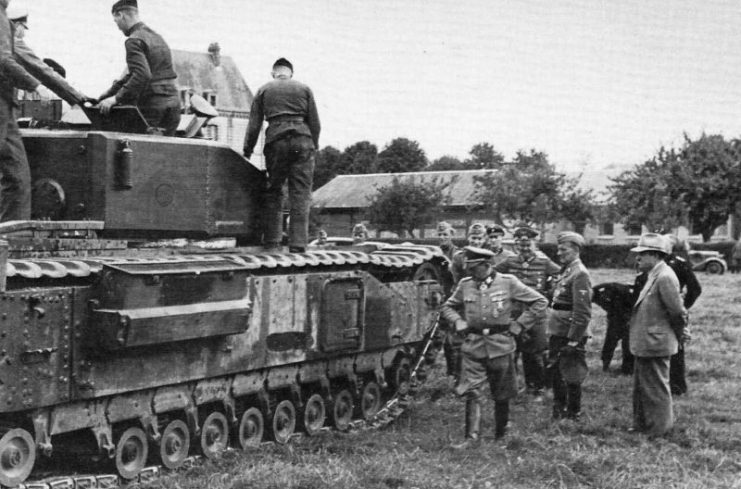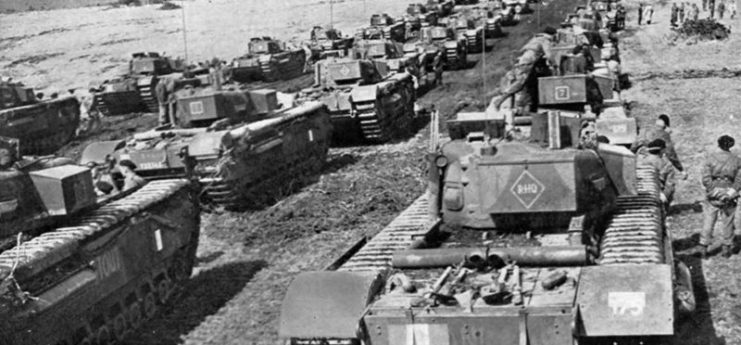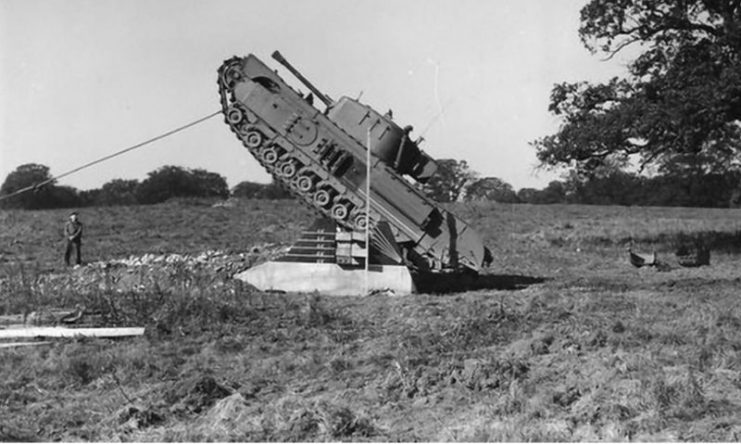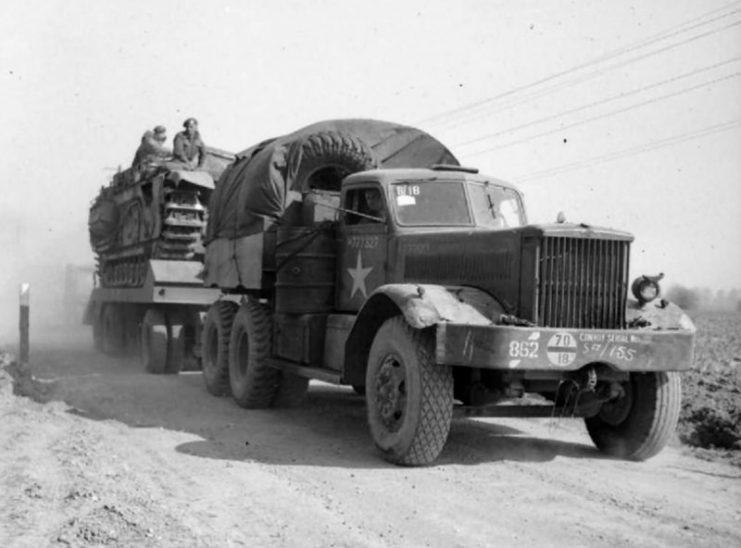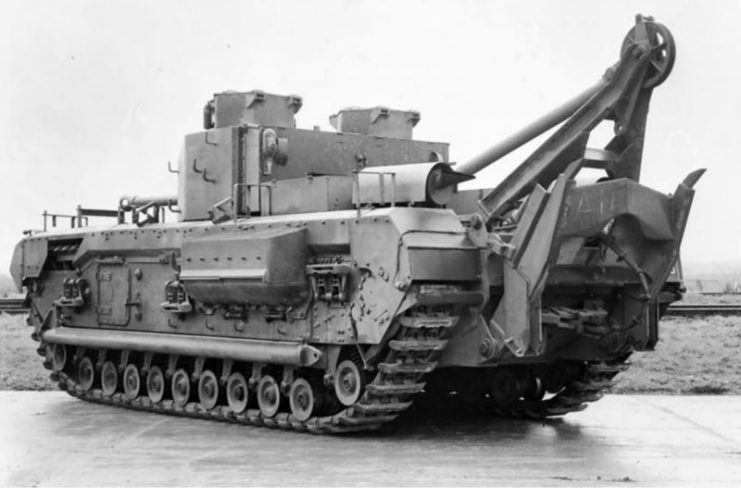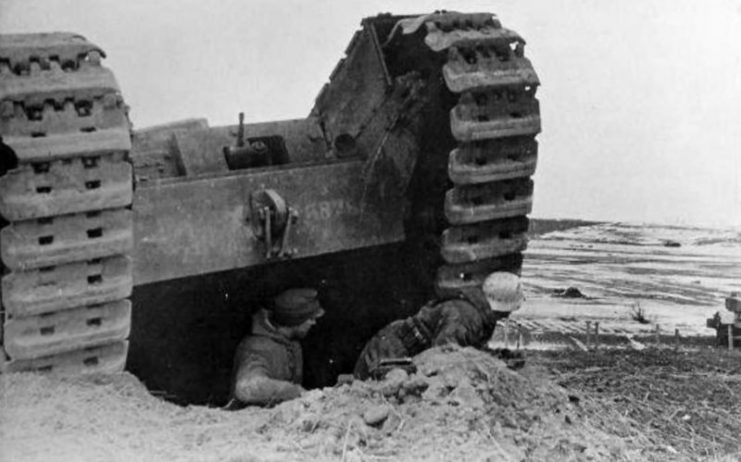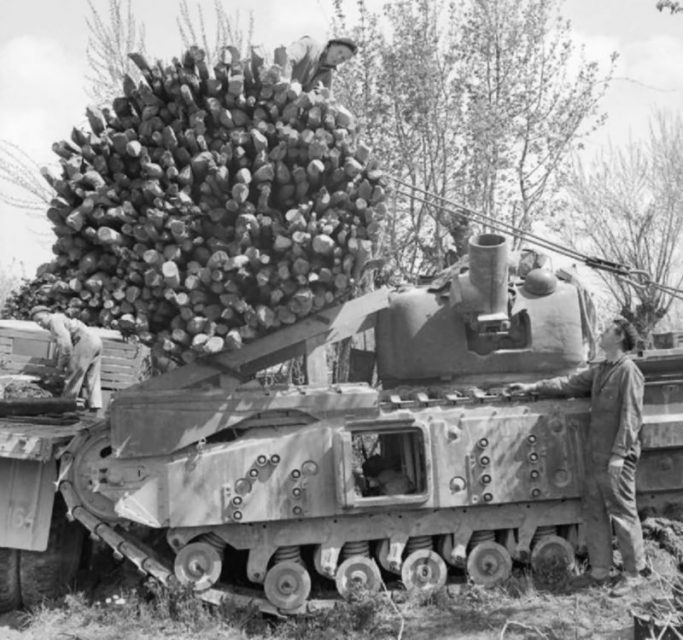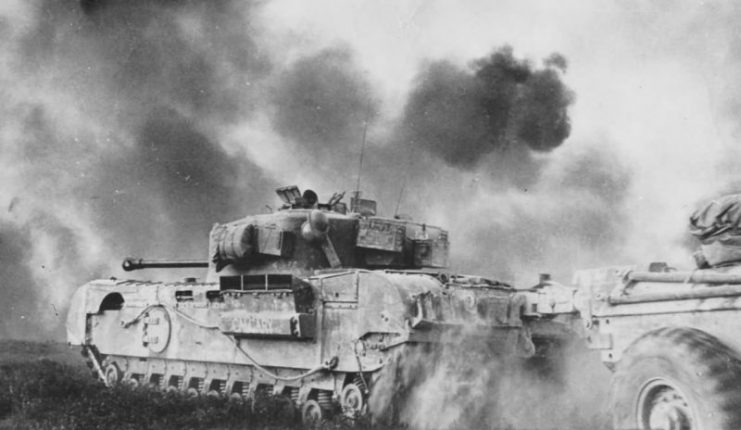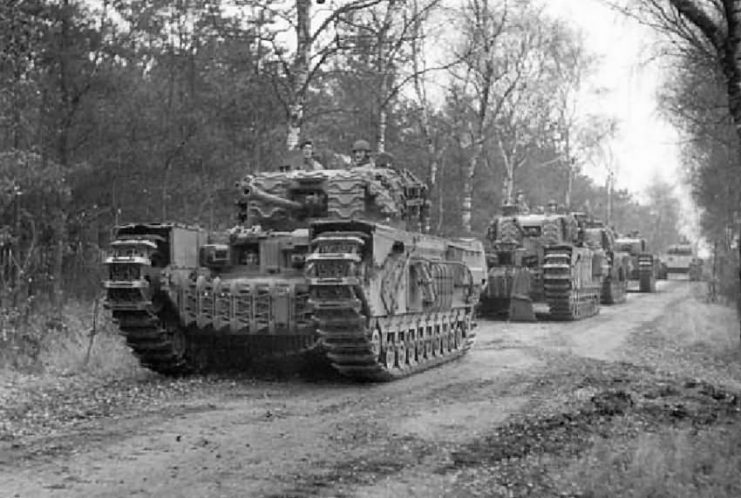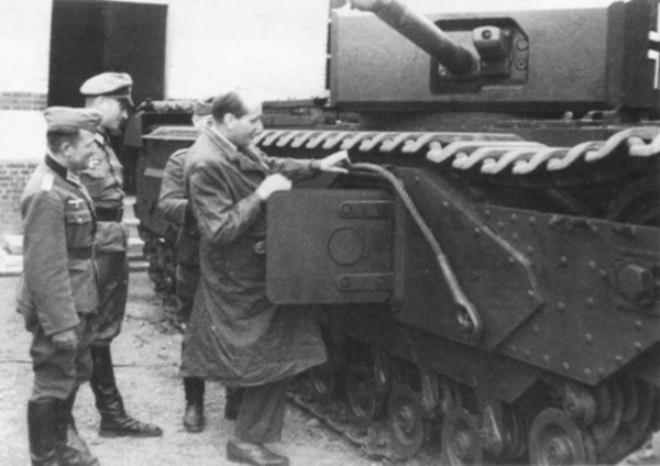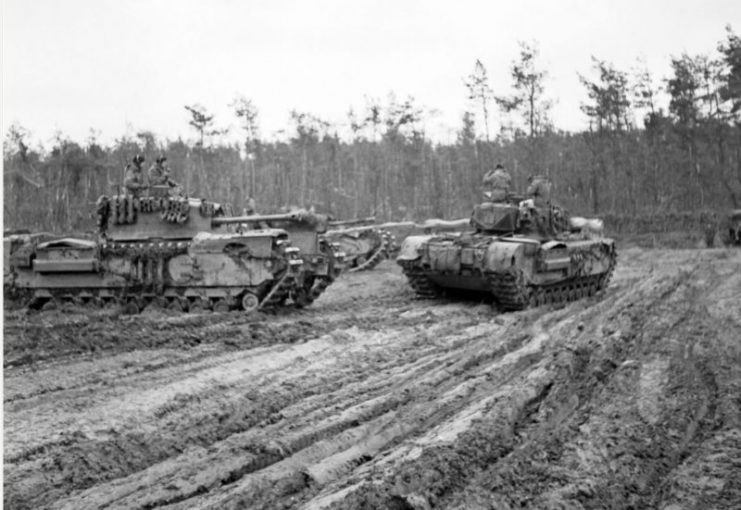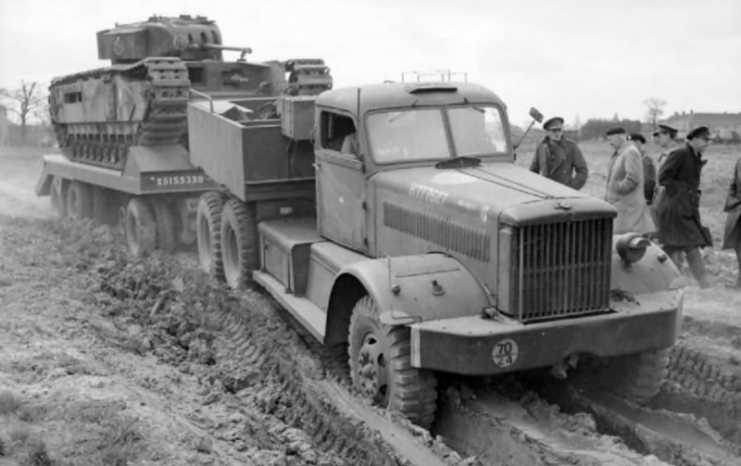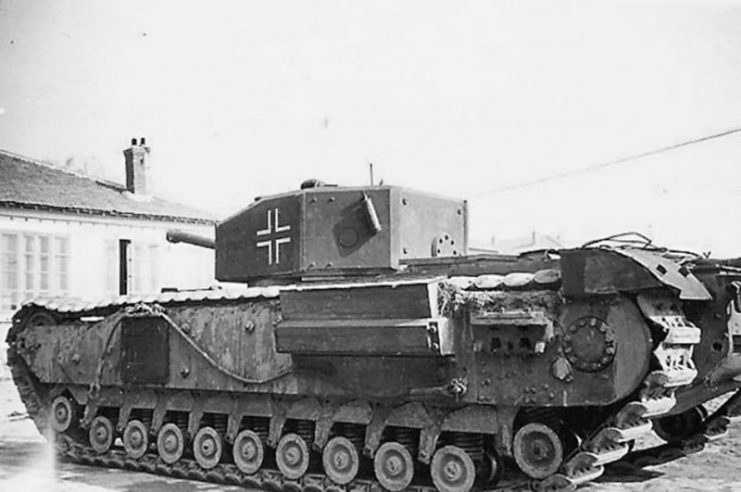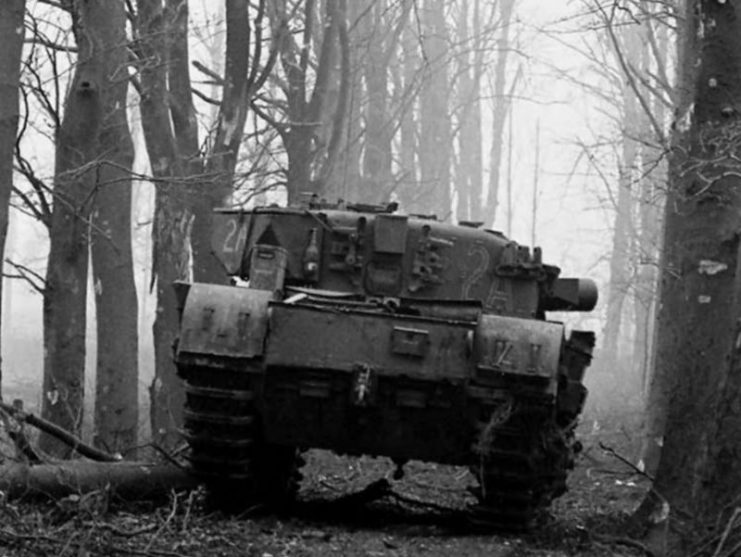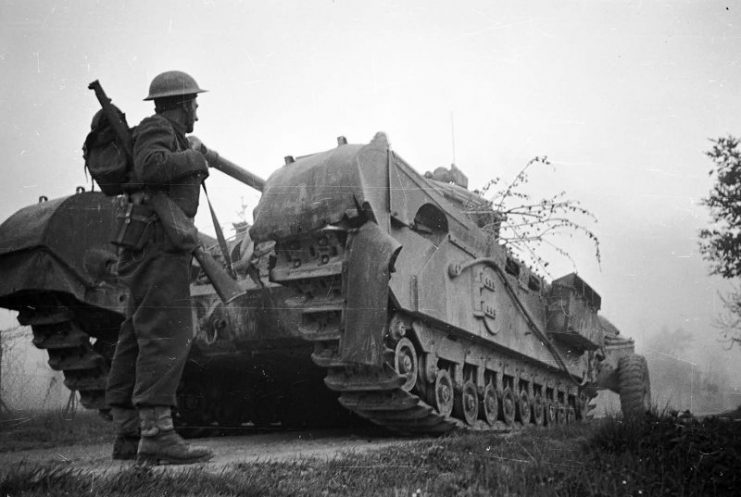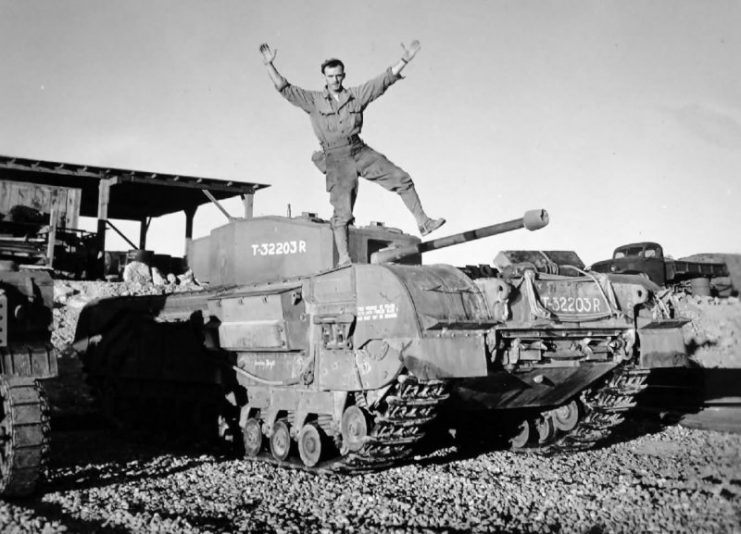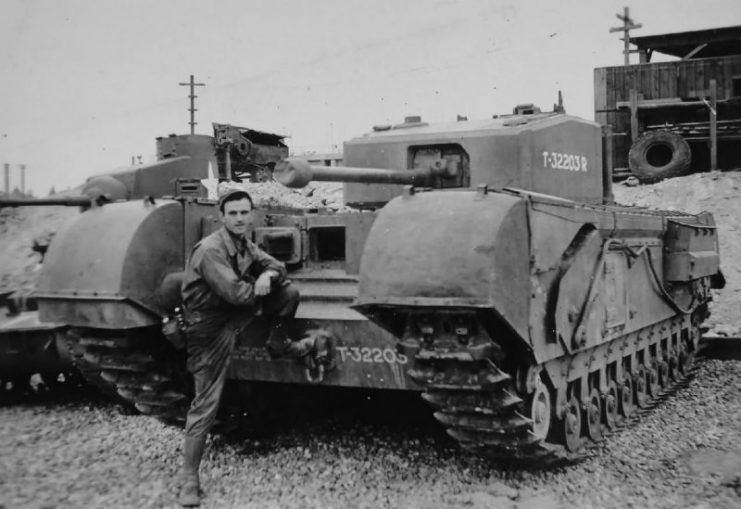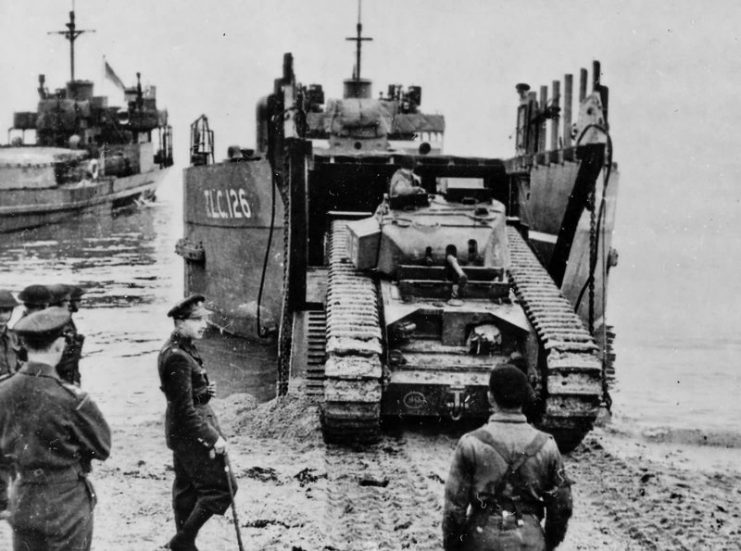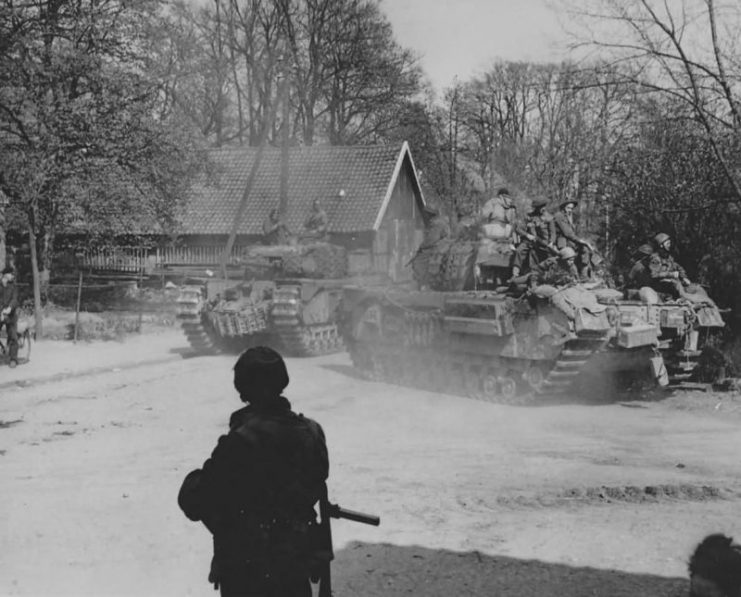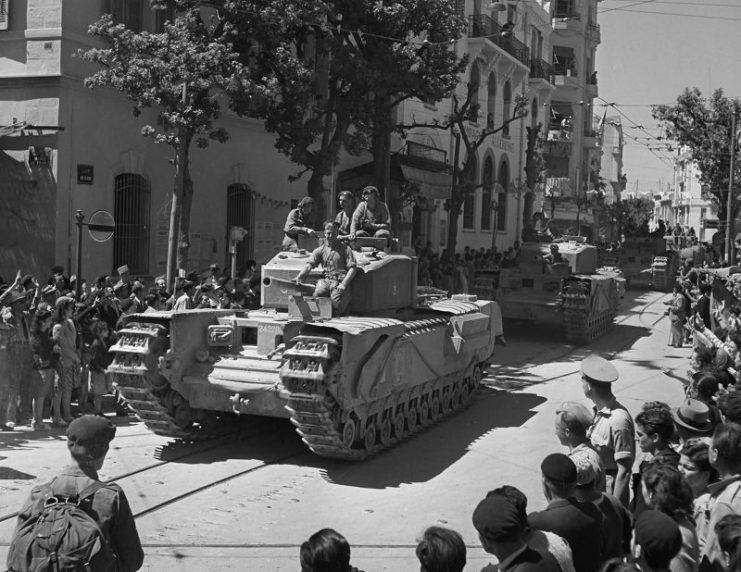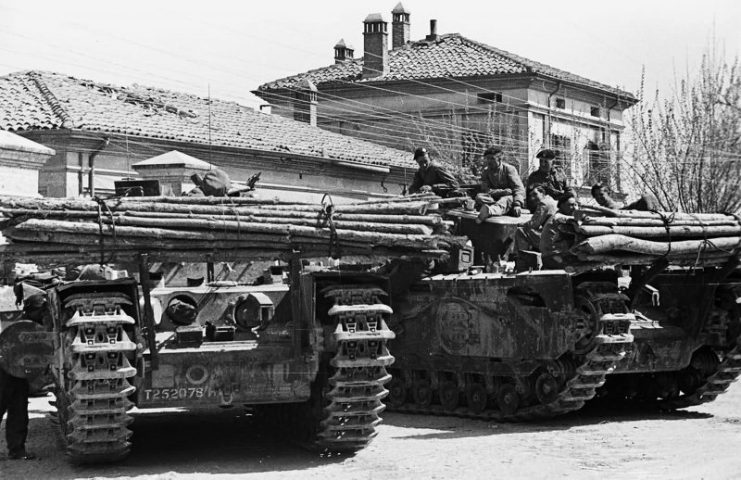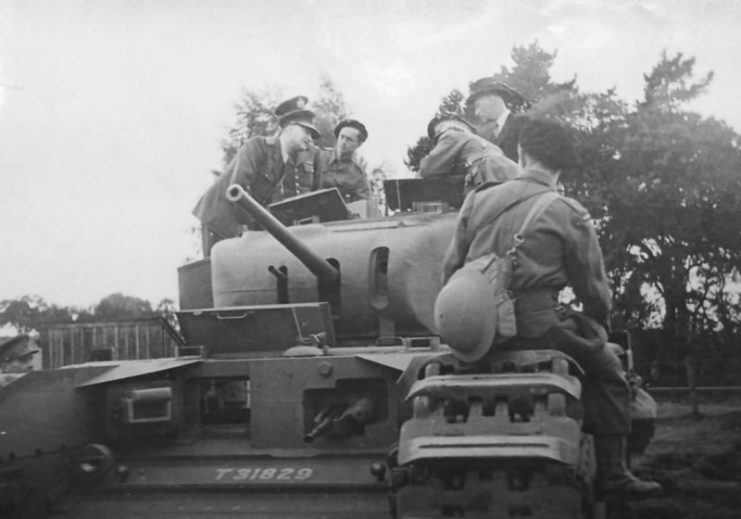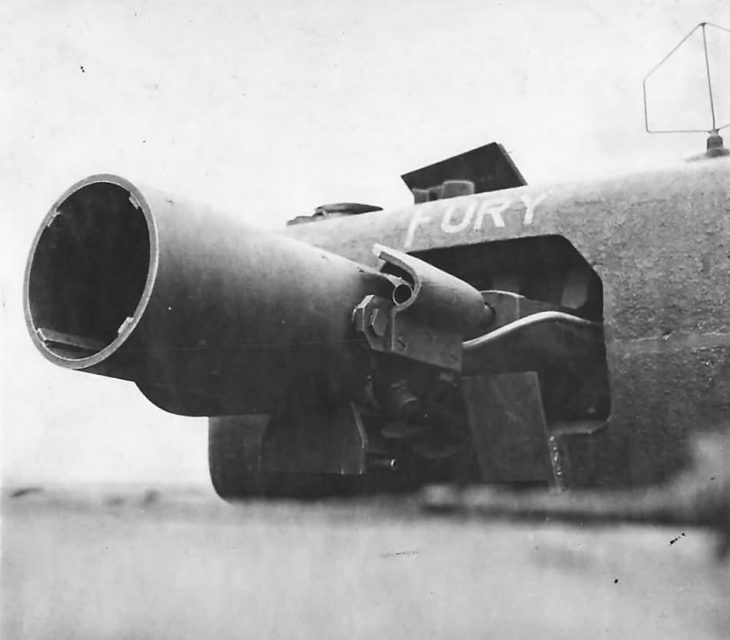The tank that had the honor of bearing the name of Winston Churchill easily falls into the category of one of the most iconic British armored vehicles of the Second World War. With its first prototype hitting the testing grounds in December 1940 and rolling off the production line just six months later, the tank had been hastily designed during the Blitz to fight off a potential land invasion of Britain.
The Churchill was introduced as an infantry support tank, and, in its design and intended role, was rather old-fashioned. As such, it relied on its heavy armor, which significantly reduced its speed. It utilized a large longitudinal chassis and all-around tracks with multiple bogies, as it was borne of a WWI mindset ― it was to act as an infantry-support vehicle, intended for large-scale breakthroughs on the front line and capable of overcoming extremely difficult terrain and steep slopes.
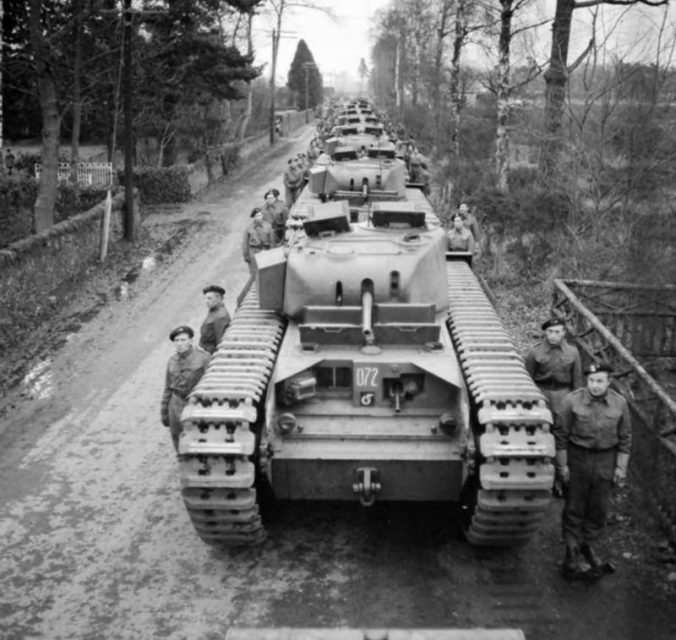
But thanks to the German Blitzkrieg doctrine, the frontline became a fairly relative term, not at all more or less static as in the days of the Great War.
As for the firepower, the initial two versions relied on 40 mm and 57 mm guns, respectively. The original Mark I Churchill included a howitzer placed in the hull’s front for providing infantry support, while the turret gun was to ward off enemy tanks. The idea was abandoned in the following version and the howitzer was replaced with a bow machine gun.
The Prime Minister of Great Britain, whose name was borrowed to christen the tank, allegedly complained to the South African Field Marshall, Jan Smuts, about his armored name-sake:
“That is the tank they named after me when they found out it was no damn good!”
Contrary to Winston Churchill’s remark, the tank performed fairly well in its early combat days, especially in North Africa. It was responsible for knocking out a Tiger I in Tunisia, in 1943. This particular Tiger was the first to be captured and studied by the Allies, making it crucial for the war effort.
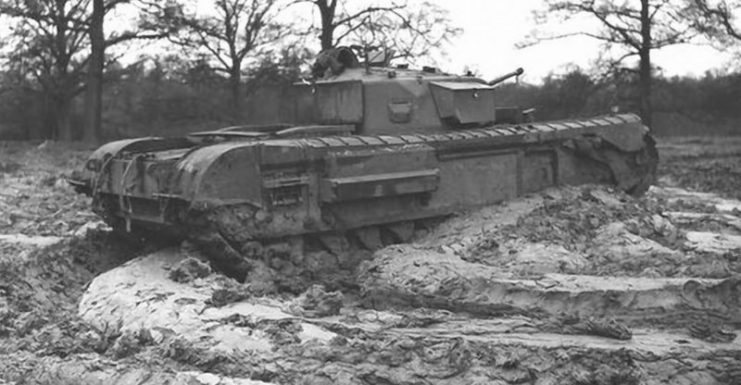
Other theatres of war followed as the tank saw action under the flags of many Commonwealth nations and the Soviet Union via the Lend-and-Lease program.
Its sturdy design found great use among the AVRE units, with modifications such as the bridge layer, or different large-caliber howitzers used against German fortifications along the beaches of Normandy.
Overall, more than 5,640 were produced, in eight different models, and many more variants.
